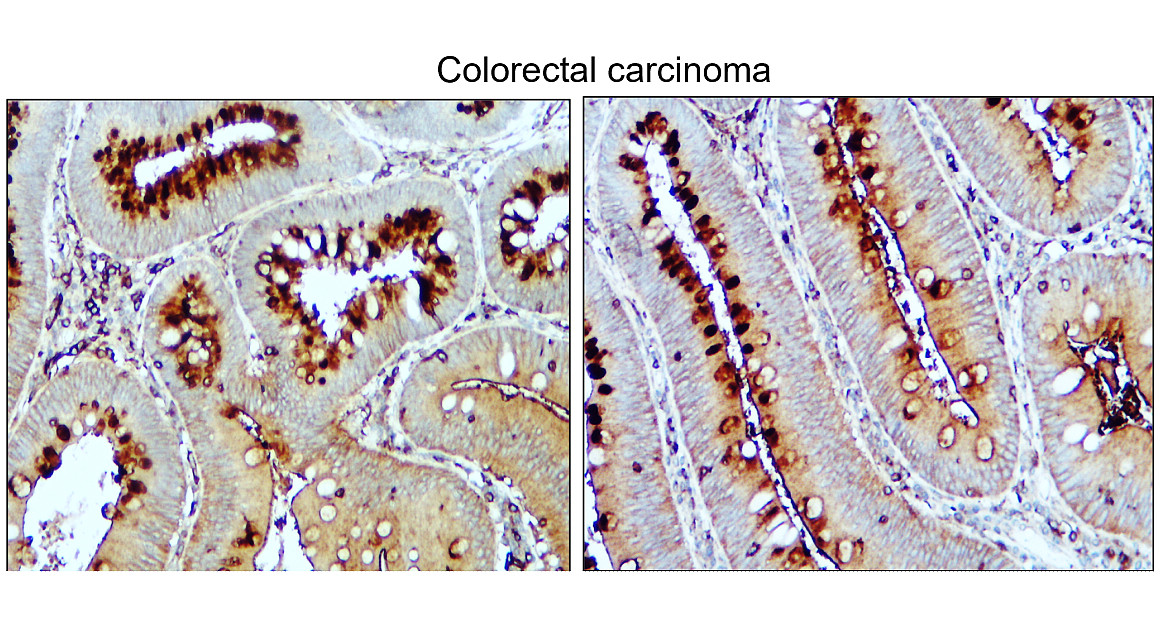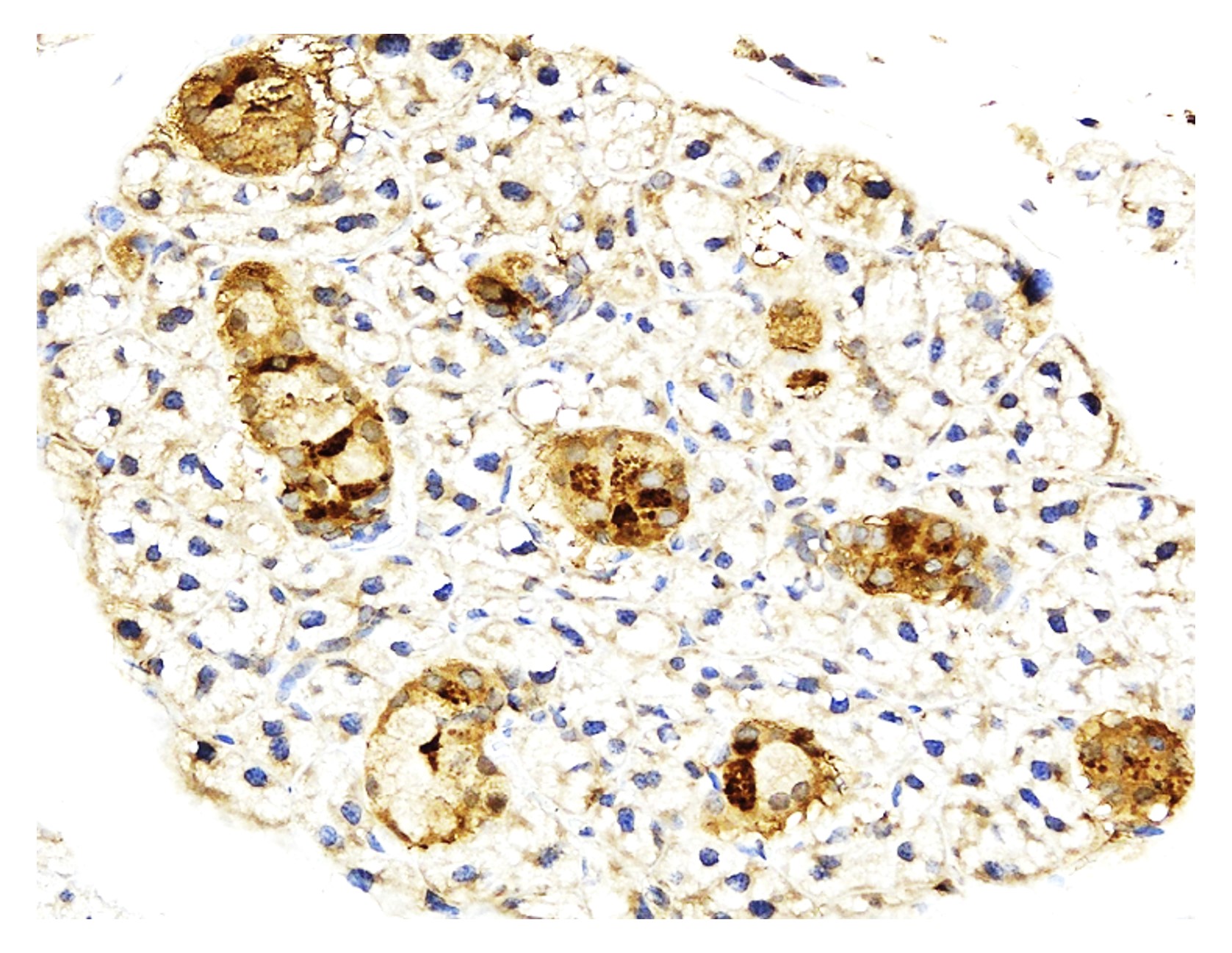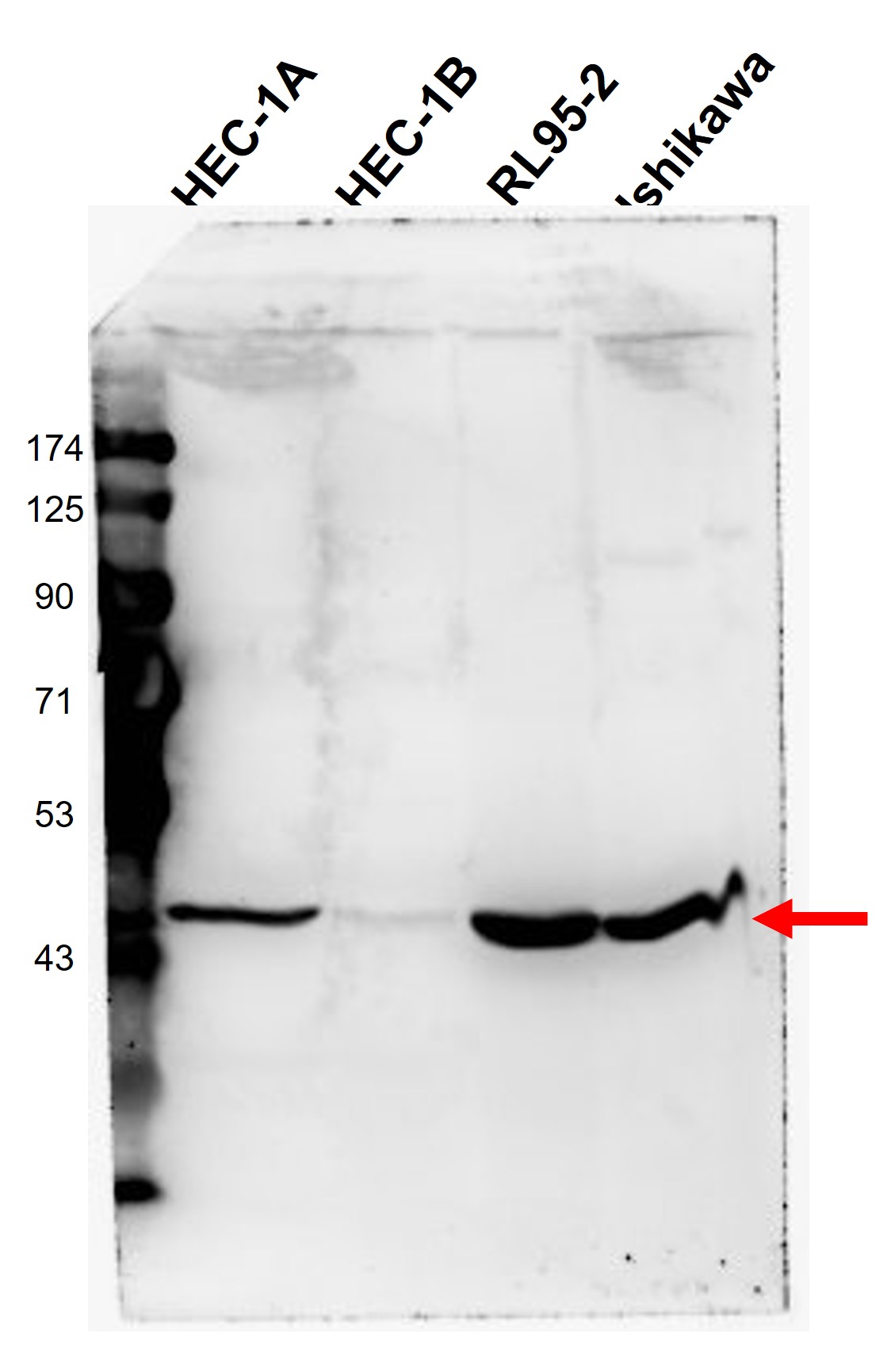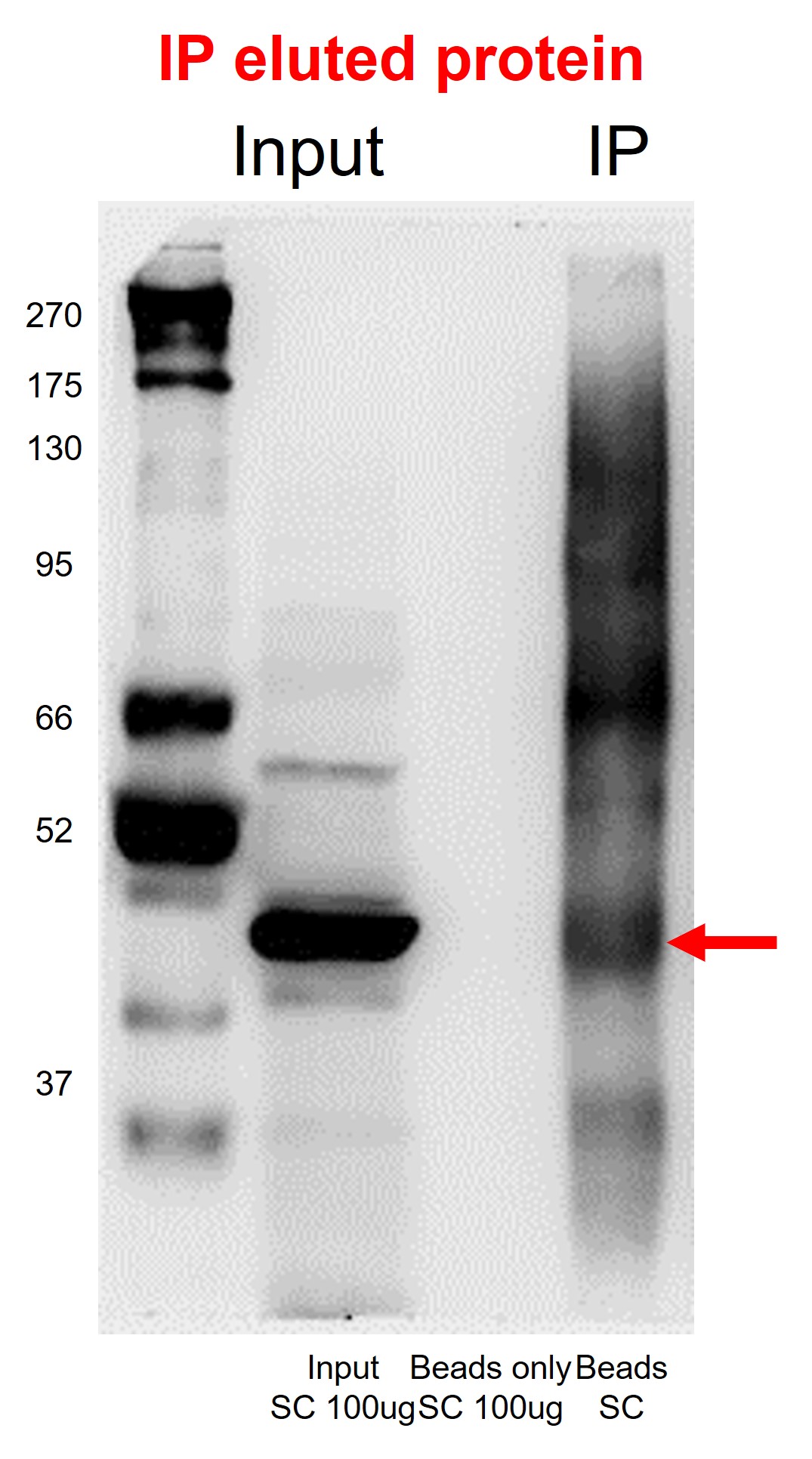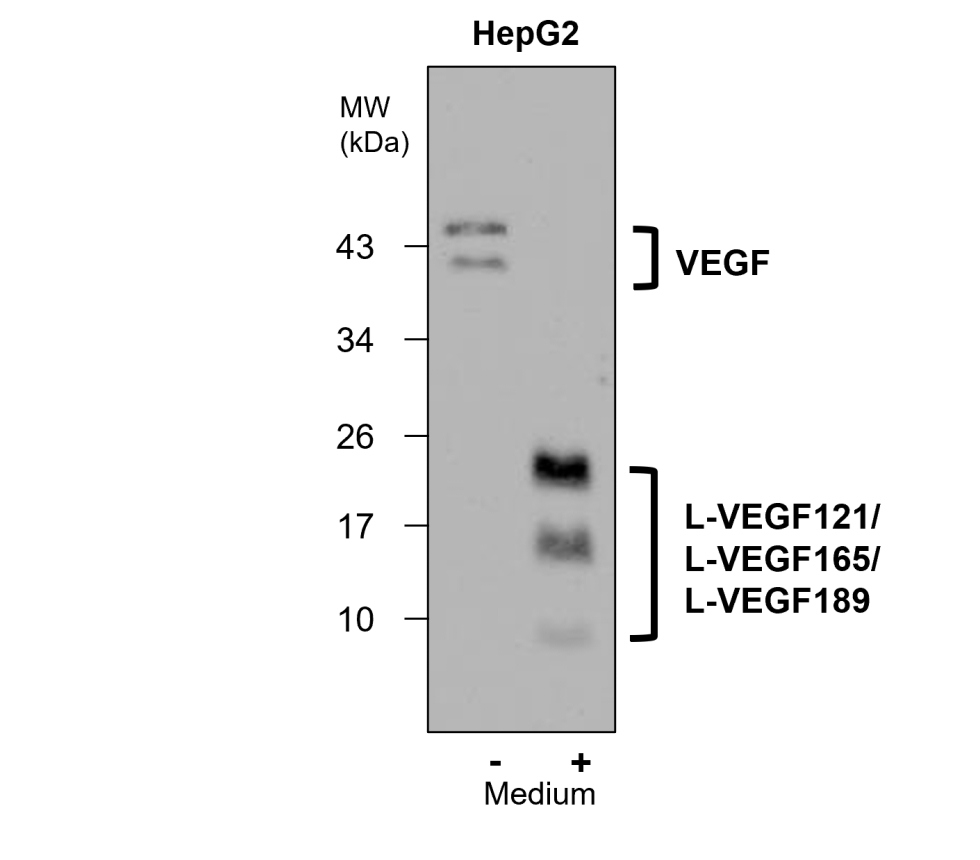



Product Includes
Application Dilution
Immunofluorescence 1:200–1:500
Immunohistochemistry (Paraffin) 1:100–1:300
Immunoprecipitation : Reported in the literature, not verified in house.
Storage
100mM Tris Glycine, 20% Glycerol (pH7). 0.025% ProClin 300 was added as a preservative
Specificity / Sensitivity
Source / Immunogen
This gene is a member of the PDGF/VEGF growth factor family. It encodes a heparin-binding protein, which exists as a disulfide-linked homodimer. This growth factor induces proliferation and migration of vascular endothelial cells, and is essential for both physiological and pathological angiogenesis. Disruption of this gene in mice resulted in abnormal embryonic blood vessel formation. This gene is upregulated in many known tumors and its expression is correlated with tumor stage and progression. Elevated levels of this protein are found in patients with POEMS syndrome, also known as Crow-Fukase syndrome. Allelic variants of this gene have been associated with microvascular complications of diabetes 1 (MVCD1) and atherosclerosis. Alternatively spliced transcript variants encoding different isoforms have been described. There is also evidence for alternative translation initiation from upstream non-AUG (CUG) codons resulting in additional isoforms. A recent study showed that a C-terminally extended isoform is produced by use of an alternative in-frame translation termination codon via a stop codon readthrough mechanism, and that this isoform is antiangiogenic. Expression of some isoforms derived from the AUG start codon is regulated by a small upstream open reading frame, which is located within an internal ribosome entry site. The levels of VEGF are increased during infection with severe acute respiratory syndrome coronavirus 2 (SARS-CoV-2), thus promoting inflammation by facilitating recruitment of inflammatory cells, and by increasing the level of angiopoietin II (Ang II), one of two products of the SARS-CoV-2 binding target, angiotensin-converting enzyme 2 (ACE2). In turn, Ang II facilitates the elevation of VEGF, thus forming a vicious cycle in the release of inflammatory cytokines. [provided by RefSeq, Jun 2020]
| Title | |
|---|---|
| 1 |
Application
Reactivity Human
|
| 2 |
Application
Reactivity Human
|
Reviews


Customer feedback Image
Application : FFPE immunohistochemistry
Condition / Dilution: 1-200
Epitope Retrieval methods: Citrate Buffer, pH 6.0
Data from : Li-Tzung Biotechnology. Co


Customer feedback Image
Application : Western blot
Condition / Dilution:1-1000, 10% gel
Data from : Taipei Veterans General Hospital


Customer feedback Image
Application : Western blot / immunoprecipitation
Condition / Dilution: 1-1000, 10% gel
Data from : Taipei Veterans General Hospital

